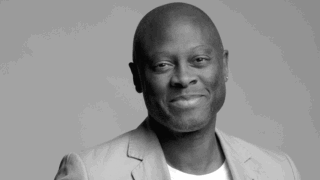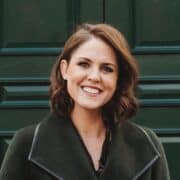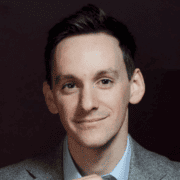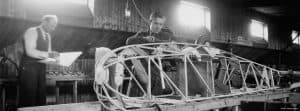The Lavin Agency Speakers Bureau
A speakers bureau that represents the best original thinkers,
writers, and doers for speaking engagements.
A speakers bureau that represents the best original thinkers,
writers, and doers for speaking engagements.
Math is the science of not being wrong. It touches everything we do.
How can you stop a pandemic from sweeping the world? Can ancient Greek proportions predict the stock market? And how do ChatGPT and other generative AI tools really work? New York Times bestselling author of How Not to Be Wrong, JORDAN ELLENBERG draws on his recent bestseller Shape to show us how math touches everything we do—this time, zeroing in on the geometry behind the world’s most important scientific, political, and technological problems. He pulls back the curtain on the inner workings of our most powerful AI tools, showing us their strengths and limitations and how we can use them as partners at work. Much like how Freakonomics brought economics into popular discourse, Ellenberg’s work uses math to unveil the hidden beauty and logic of the world around us, and put its power into our hands.
“Like Lewis Carroll, George Gamow, and Martin Gardner before him, Jordan Ellenberg shows how mathematics can delight and stimulate the mind. But he also shows that mathematical thinking should be in the toolkit of every thoughtful person—of everyone who wants to avoid fallacies, superstitions, and other ways of being wrong.”— Steven Pinker
Math, as Jordan Ellenberg says, is “an atomic-powered prosthesis that you attach to your common sense, vastly multiplying its reach and strength.” Math helps every kind of thinker think better—it hones our intuition, sharpens our judgment, tames uncertainty, and lets us see the deeper structure and logic of our world.
The Vilas Distinguished Achievement Professor of Mathematics at the University of Wisconsin at Madison, Ellenberg is the author of several books. His most recent, Shape: The Hidden Geometry of Information, Biology, Strategy, Democracy and Everything Else, combines his trademark intellectual curiosity and jargon-free language to transform a long-forgotten subject from our high school days into a powerful tool for measuring the world around us. His previous books include How Not to Be Wrong: The Power of Mathematical Thinking—a beautifully written and refreshingly lucid mathematic exploration praised by the New York Times and Washington Post—and The Grasshopper King. Recently, he served as a consultant (and actor, briefly!) for the film Gifted, directed by Marc Webb, who cast Ellenberg for the role because, in his words: “he’s just a really charismatic teacher.”
Ellenberg has held an NSF-CAREER grant and an Alfred P. Sloan Fellowship, and in 2013 he was named one of the inaugural class of Fellows of the American Mathematical Society. His work has appeared in the New York Times, the Wall Street Journal, the Washington Post, Wired, The Believer, and the Boston Globe, and he is the author of the “Do the Math” column in Slate. His Wired feature story on compressed sensing appeared in the Best Writing on Mathematics 2011 anthology.
Jordan Ellenberg was great, funny, warm on stage, and he was very well received. Our clients and colleagues were all very happy with him and his presentation. Hoping to do this again with him very soon.
Drury Entertainment Group
Author of The Loop: How A.I. is Creating a World without Choices and How to Fight Back NBC News Technology Correspondent Former Editor-in-Chief of Popular Science Magazine AI Strategic Advisor to Fortune 500 Companies

Founding President, PlusCo Venture Studio Former Chief Creative and Innovation Officer, Cossette

Speaker on AI and Education Executive Director of the Stanford Accelerator for Learning

Author of The Loop: How A.I. is Creating a World without Choices and How to Fight Back NBC News Technology Correspondent Former Editor-in-Chief of Popular Science Magazine AI Strategic Advisor to Fortune 500 Companies

Harvard Economist MacArthur Genius Studying Economic Opportunity Director of Opportunity Insights

Instant New York Times Bestselling Author of Empire of AI TIME100 AI Honoree Lead Designer of The Pulitzer Center's AI Spotlight Series

Author of The Loop: How A.I. is Creating a World without Choices and How to Fight Back NBC News Technology Correspondent Former Editor-in-Chief of Popular Science Magazine AI Strategic Advisor to Fortune 500 Companies

Speaker on AI and Education Executive Director of the Stanford Accelerator for Learning

Former CEO, Everyday Robots, Google’s Pioneering AI and Robotics Moonshot

Author of Grit, the #1 New York Times Bestseller | Pioneering Researcher on Grit, Perseverance, and the Science of Success

2024 Nobel Prize Winner | 3rd Most Cited Economist in the World | Bestselling Co-Author of Why Nations Fail and Power and Progress

Harvard Business School Behavioral Science Professor | "40 Under 40 MBA Professor" | Author of TALK: The Science of Conversation and the Art of Being Ourselves

#1 New York Times Bestselling Co-Author of Abundance | Host of thePlain English Podcast | Founder of the Substack Derek Thompson

#1 New York Times Bestselling Author of How the Word Is Passed and Above Ground | The Atlantic Staff Writer


The math we learn in school can seem like a dull set of rules, laid down by the ancients and not to be questioned. In this talk, Jordan Ellenberg shows us how wrong this view is: Math touches everything we do, allowing us to see the hidden structures beneath the messy and chaotic surface of our daily lives. It’s a science of not being wrong, worked out through centuries of hard work and argument. Drawing from history as well as the latest theoretical developments, Ellenberg demonstrates that profound mathematical ideas are present whenever we reason, from the commonplace to the cosmic. And, he shows how to use this knowledge in our lives, whether you’re a business looking to discover the power of big data, a corporate audience out to improve logic and understanding within your organization, or a college crowd with an appetite for the latest research by one of America’s rising scholarly stars.